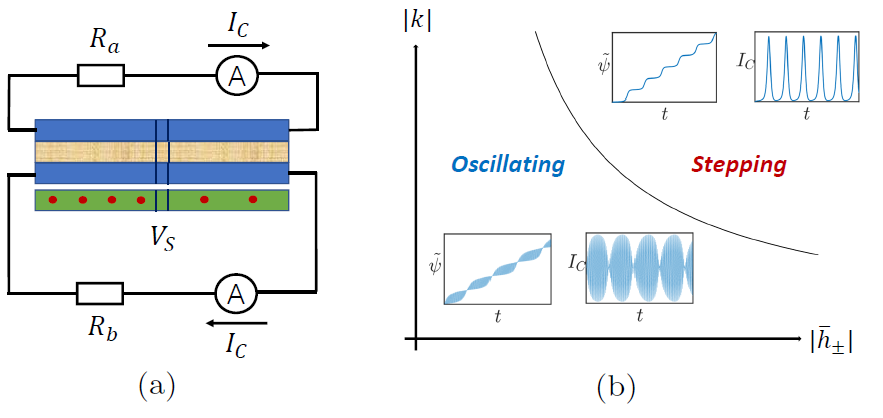Research Group of Ryuichi Shindou proposed dissipationless conversion between magnetic spin and electric charge in emergent superfluid in 2D materials
Time:2022-02-10ClickTimes:
Exploring novel approaches to information storage and transport is one of the major challenges in condensed matter physics. Spintronics utilize the spin degree of freedom of electrons. As local magnetism in devices is hard to be detected directly, efficient spin-charge conversion becomes a prerequisite for spintronics applications. After material discoveries with large relativistic spin-orbit interaction in recent years, inverse spin Hall and Rashba-Edelstein effects become prevalently used to convert spin current and spin voltage into charge current. These effects are accompanied by diffusive quasiparticle transport, where the spin-charge conversions are generally lossy. A dissipationless spin-charge conversion could be realized in a superfluid that has supercurrent flow properties of charge and spin. Spin-triplet superconductors and ferromagnetic Josephson junctions are such superfluid systems, where spin-polarized Cooper pairs in superconductors are induced by spontaneous symmetry breakings or by magnetic proximity effects respectively. Especially, it was previously shown in the Josephson junction systems that ferromagnetic moments in magnetic interfaces control a relative superconducting phase between the spin up and down Cooper pairs, leading to a dissipationless coupling between Josephson charge and spin currents. Nonetheless, the relative phase has a finite mass in the ferromagnetic junction systems, which hinders the low-energy conversion from spin voltage to charge current.
Ryuichi Shindou, the tenured associate professor, and Yeyang Zhang, the Ph.D. student of Grade 2020 in ICQM, School of Physics, proposed that exciton condensates in 2D electron-hole double-layer (EHDL) systems are ideal platforms for dissipationless conversion between spin voltage and charge current. Electrons and holes in semiconductors interact through long-range Coulomb attraction, which binds them into a bosonic bound state called excitons. Bose-Einstein condensation of excitons in a 2D EHDL system leads to dissipationless supercurrent flows of charge and spin. Recently, condensed-matter experiments demonstrated a lot of compelling evidence of experimental realizations of exciton condensations in 2D materials. Motivated by these developments, the Research Group of Prof. Ryuichi Shindou proposed the dissipationless spin-charge conversion phenomenon in 2D EHDL systems under a magnetic exchange field. They clarified the generic nature of the supercurrent flow of spin and charge in the excitonic condensate under the exchange fields, and demonstrated how a spatial gradient of the exchange field (spin voltage) leads to a novel time-dependent charge supercurrent flow.

Fig. Charge current (IC) induced by spin voltage (VS). (a) A side view of the 2D EHDL system under the magnetic exchange field. The charge currents can be measured by the two external circuits attached to electron and hole layers (two blue-color regions) respectively. The spin voltage is added at the Josephson junction in the hole layer (lower blue-color region) through the magnetic proximity effect from a ferromagnetic substrate (the green-colored region with red points). (b) The AC behavior of the relative phase psi(t) and charge current IC(t). psi(t) shows either an oscillating behavior or a stepping behavior.
The research paper titled Dissipationless spin-charge conversion in excitonic pseudospin superfluid was published in Physical Review Letters on Feb 8th. Yeyang Zhang was the first author and Ryuichi Shindou was the corresponding author.
The research was supported by the National Basic Research Programs of China and by the National Natural Science Foundation of China. The proposed spin-charge conversion phenomenon opens a fertile possibility of spintronics applications of the excitonic superfluidity in the 2D materials. The research also establishes a solid understanding of the nature of excitonic superfluidities in the 2D EHDL systems in the presence of magnetism and spin-orbit interaction.
URL: https://link.aps.org/doi/10.1103/PhysRevLett.128.066601
